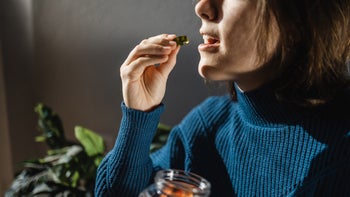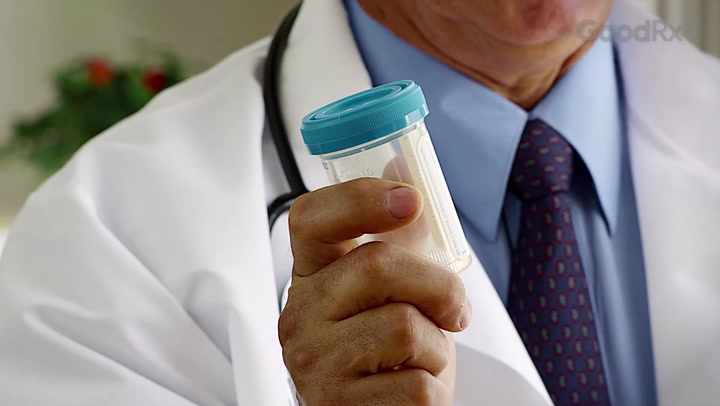
What’s the Safest Way to Smoke Weed? 8 Tips to Reduce the Risks, According to Experts
Key takeaways:
Since it isn’t an FDA-approved medication, no cannabis use is considered universally safe. But you can help reduce the risks of cannabis by starting with a low THC dose (2.5 mg or less) or product with a high CBD to low THC ratio — especially if you’re new to it.
Buy from state-regulated dispensaries to help ensure safety and product quality. And avoid smoking cannabis, as it can harm your lungs.
Talk to a healthcare professional before trying cannabis, especially if you’re under 25, over 65, or living with health conditions such as heart issues or mental illness.
Table of contents

Using cannabis can take a little know-how. Whether you’re new to cannabis or looking to make informed choices, a few key points can help you get started. From talking to a healthcare professional to choosing the right product at the right dose, here’s what you should keep in mind if you’re curious about the safest way to smoke weed.
Although many states have legalized cannabis, it’s still considered a Schedule 1 controlled substance and is illegal at the federal level. And cannabis products aren’t regulated by the FDA. This means that no cannabis use can be guaranteed as safe outside of the prescription cannabis medication Epidiolex (cannabidiol). The following steps are meant to help reduce the risks of cannabis use, but you should always talk to a healthcare professional before incorporating cannabis into your routine.
1. Talk to a healthcare professional for guidance
Cannabis has side effects and interactions to consider before using it. So the best way to protect your safety is to speak to a healthcare professional. This is especially important if you’re:
Pregnant or breastfeeding
Living with schizophrenia, bipolar disorder, or other mental health conditions
Have a personal or family history of psychosis
Living with a heart-related condition
Keep in mind that not all medical professionals are experienced when it comes to cannabis. The Society of Cannabis Clinicians maintains a provider directory to help you find support in your area. If cannabis is legal in your state, you can reach out to your state’s medical cannabis program for guidance.
Search and compare options
2. Only buy cannabis from state-regulated dispensaries
One of the best ways to help protect your safety when using cannabis is to buy products from state-regulated dispensaries. These dispensaries follow strict rules when it comes to how their products are made. They’re typically also required to test products for potency as well as for harmful substances such as pesticides, mold, and unsafe additives.
Another advantage of regulated dispensaries is that the products typically have much clearer labeling when it comes to potency and dosage. This helps ensure you know what you’re taking to avoid unintended effects.
3. Choose the right ratio of cannabinoids for your needs
Cannabis contains a variety of active ingredients, known as cannabinoids. The most common include THC (tetrahydrocannabinol) and CBD (cannabidiol). Most products sold at licensed cannabis dispensaries will show cannabis potency as a ratio. Common cannabis ratios include:
Low THC:High CBD (1:20)
Equal THC:CBD (1:1)
High THC:Low CBD (20:1)
Experts recommend starting with a low THC to high CBD product if you’re new to cannabis. You can slowly increase the dosage or ratio of THC from there based on how you respond. It’s possible to use cannabis without “getting high.” But as the ratio of THC increases, so does the potency of the product in terms of its intoxicating effect. That being said, all ratios of cannabis can be psychoactive if the dosage is large enough.
Good to know: The cannabis ratio is often expressed as a number, such as 1:20 or 1:1. But states differ in terms of which ingredient is listed first. Some show the number as THC:CBD, while others show it as CBD:THC. It’s best to ask a dispensary associate if you’re unsure to avoid mistakes.
4. Understand the differences between cannabis dosage forms
Cannabis comes in a wide variety of products. And each dosage form works differently in your body. The chart below highlights the most common dosage forms in terms of when they start working and how long they last.
| Dosage Form | Onset | Typical Duration |
|---|---|---|
Inhaled
|
Within a few minutes | 2-4 hrs |
Sublingual (under the tongue)
|
15-45 min | 6-8 hrs |
Oral
|
30-120 min | 6-12 hrs or longer |
|
Varies | Varies |
Keep in mind that the effects of cannabis can vary greatly from person to person. So you may need to try several different products to find what suits you best.
5. Start with a low dose of cannabis at first
How much cannabis you consume can also play a large role in how it affects you. Taking too much THC can lead to unwanted side effects, such as anxiety, dizziness, or feeling too “high.” Moderation is key.
A good rule to follow is to “start low, go slow.” This means starting with a high CBD to low THC product or a THC dosage of 2.5 mg or less. You can then increase your dosage from there based on your desired effects.
What’s the difference between medical and adult-use cannabis? Learn more about how these two legal categories for cannabis are different.
THC Dosage Guide: Learn how to dose THC safely and how dosage forms differ in their effects.
Cannabis side effects: Review common and rare cannabis side effects and how to manage them if they occur.
How much cannabis is safe to swallow?
No amount of cannabis is considered universally safe, and there isn’t a standard dosage that works for everyone. But as mentioned, most experts recommend starting with a THC dosage of 2.5 mg or less.
Oral cannabis products, also known as edibles, tend to be more intoxicating than other dosage forms. They also take longer to start working than other dosage forms. So it’s best to start with a small amount and wait several hours before taking more to prevent an accidental overdose.
There isn’t a set maximum dosage of cannabis, either. A dose that’s non-intoxicating for one person may be too much for someone else. The best way to protect your safety is to increase your dose by a small amount at a time until you find what works best for you.
Read more like this
Explore these related articles, suggested for readers like you.
How much cannabis is safe to smoke?
Inhaling cannabis has long been the preferred method by many people. That’s because inhaled cannabis works quickly, which can make it easier to control your dose and avoid consuming too much.
But according to the American Lung Association and medical experts, smoking cannabis is not a safe option. Vaping cannabis may be safer, since vaporizers heat cannabis flower or oil without burning it. But there are still risks to consider, such as possible lung irritation or damage. Cannabis inhalers are gaining interest as an alternative to smoking or vaping, but so far there isn’t much information as to their safety.
6. Be aware of cannabis risks and side effects
People report many benefits from cannabis, but you should also be aware of the risks. Because of its possible intoxicating effects, you should avoid driving after consuming cannabis. It’s also a good idea to run your medication list by a healthcare professional to check for any interactions.
Consuming too much THC can lead to unpleasant side effects, including:
Anxiety
Panic attacks
Chest pain
Seeing or hearing things that aren’t there
Paranoia
Seizures
Heavy or long-term cannabis use can lead to cannabis hyperemesis syndrome (severe nausea and vomiting). It can also lead to negative long-term effects on the brain and heart as well as an increased risk for developing cannabis use disorder (more on that later).
7. Learn about the legal risks of cannabis use in advance
Medical and/or adult-use cannabis is legal in many U.S. states. But it’s still an illegal substance at the federal level. This means that it isn’t legal to take cannabis across state lines or in an airplane. Cannabis use may also affect housing, employment, or even child custody in some cases.
Being aware of these risks can help you decide if cannabis is a safe option for your situation. Keep in mind that state laws can also differ, so it’s a good idea to look into your state and local laws as well as the federal legal risks of cannabis use.
8. Know the signs of substance misuse and how to get help
If you use cannabis often, you may develop tolerance to its effects. Tolerance is often the first sign that you may be consuming cannabis too often or your dose is too high. If you’re experiencing tolerance, try taking a break from cannabis for a couple of days. This can help lower your tolerance level.
Cannabis use disorder isn’t as common with cannabis as with other substances. But it can happen to anyone. If you notice more than two signs of cannabis use disorder, it’s a good idea to seek professional help. These include:
Using cannabis even if it causes problems at work, school, or home
Experiencing cannabis cravings you’re unable to resist
Having withdrawal symptoms when you stop consuming cannabis
Using cannabis in high-risk situations, such as while driving a car
Being unable to quit consuming cannabis on your own
Giving up important activities with friends or family in favor of using cannabis
Continuing to use cannabis despite physical or mental problems
If you or a loved one is struggling with cannabis use, here are some additional resources that can help:
If you or someone you know struggles with substance use, help is available. Call SAMHSA’s National Helpline at 1-800-662-HELP (4357) to learn about resources in your area.
The bottom line
Protecting your safety when consuming cannabis involves making informed choices. If you choose to use cannabis, start with a low dose, understand which product is best suited for your needs, and buy only from licensed dispensaries.
Always talk to a healthcare professional before consuming cannabis, especially if you have health concerns or take other medications. Knowing the risks, understanding the legal landscape, and recognizing signs of cannabis misuse can help you make the best decisions for your health and safety.
Why trust our experts?



References
Almog, S., et al. (2020). The pharmacokinetics, efficacy, and safety of a novel selectivedose cannabis inhaler in patients with chronic pain: A randomized, double-blinded, placebo-controlled trial. European Journal of Pain.
American Lung Association. (2024). Marijuana and lung health.
Bhaskar, A., et al. (2021). Consensus recommendations on dosing and administration of medical cannabis to treat chronic pain: results of a modified Delphi process. Journal of Cannabis Research.
Burt, T. S., et al. (2021). Perceived effects of cannabis and changes in driving performance under the influence of cannabis. Traffic Injury Prevention.
Canadian Center on Substance Use and Addiction. (n.d.). Edible cannabis affects people differently: ‘Start low - go slow’.
Canadian Center on Substance Use and Addiction. (2019). Cannabis: Inhaling vs. ingesting.
Centers for Disease Control and Prevention. (2024). Understanding your risk for cannabis use disorder.
Chaiton, M., et al. (2021). Are vaporizers a lower-risk alternative to smoking cannabis? Canadian Journal of Public Health.
Fischer, B., et al. (2022). Lower-risk cannabis use guidelines (LRCUG) for reducing health harms from non-medical cannabis use: A comprehensive evidence and recommendations update. International Journal of Drug Policy.
Healer. (n.d.). Sensitization protocol.
HUD Exchange. (2022). Can a Public Housing Agency (PHA) make a reasonable accommodation for medical marijuana in a State which allows medical and/or recreational marijuana? U.S. Department of Health and Human Services.
Jacobus, J., et al. (2014). Effects of cannabis on the adolescent brain. Current Pharmaceutical Design.
MacCallum, C. A., et al. (2018). Practical considerations in medical cannabis administration and dosing. European Journal of Internal Medicine.
Marijuana Policy Project. (2022). Medical cannabis laws and anti-discrimination provisions.
National Academies of Sciences, Engineering, and Medicine. (2017). Mental health. The Health Effects of Cannabis and Cannabinoids: The Current State of Evidence and Recommendations for Research. National Academies Press.
National Conference of State Legislature. (2025). State medical cannabis laws.
Keep in mind that cannabis is legal in some states for personal and/or medicinal use, but not in others. Cannabis is still illegal under federal law.





























